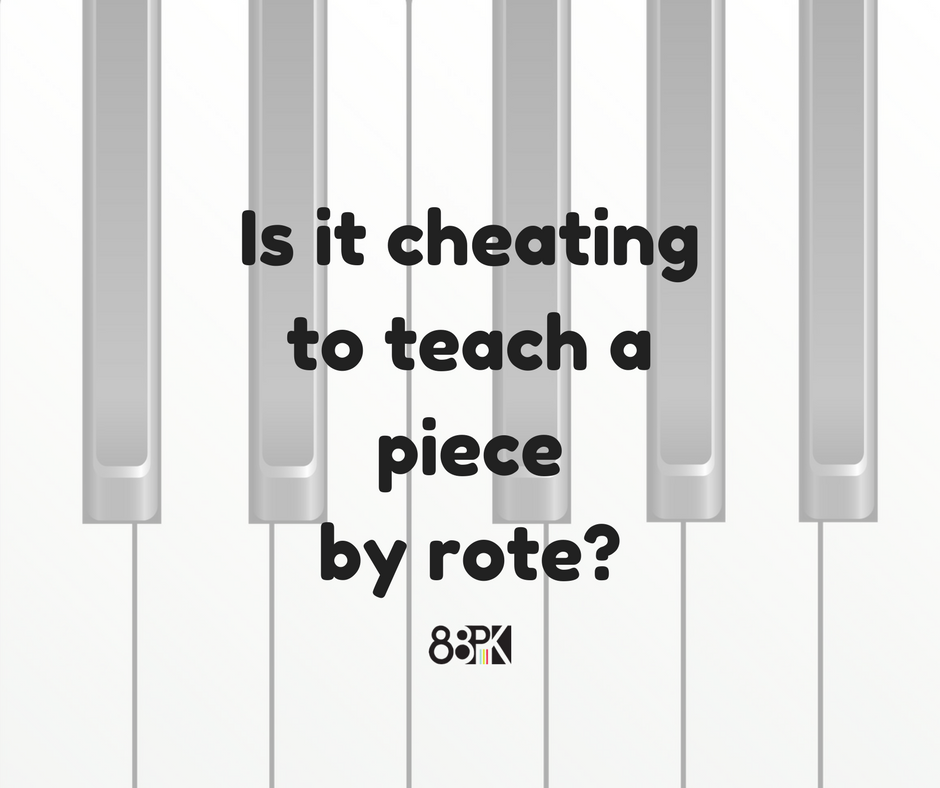Is it cheating to teach a piece by rote?
Some may say teaching a piece by rote cheats a student out of developing reading skills. I say teaching by rote is anything but cheating! Keep reading and watch a recent Facebook live video to learn why and how I do it.
Can you teach a Baroque piece by rote?
Since many readers like to Go Baroque, I made a Facebook live video (in 2017!) of how I like to teach "Musette" by rote. In the video, learn why I believe teaching pattern pieces like "Musette" by rote is so vital to developing student skills. I've added a few more reasons below.
What are the benefits of teaching a piece by rote?
The process...
Builds students' confidence which leads to success which leads to progress which leads to pianists who stick to the bench.
Boosts confidence in playing skills because the "middle man" or the page is removed, and students aren't trapped in the middle of the piano reading from a limited amount of notes in the grand staff. They can explore the entire range of the piano which provides an exciting and more satisfying sound--especially when the pedal is added!
Elevates playing skills as a rote piece is usually more difficult and sounds more complex than students can read.
Connects the theory students learn and puts it into action, reinforcing and solidifying concepts.
Aids in memorization skills as students must remember the patterns' feel and sound instead of relying on visual cues.
Develops ear skills. If you want to balance eye-ear skills, teaching by rote is the perfect opportunity to do so.
Acknowledges the learning styles of students who may find reading a music score much more complex than learning by ear. This may be the key to unlocking success for those usually stumped by the grand staff.
Enhances reading skills. YES! I firmly believe this is true if you teach by rote and IF you also refer to the score as students learn the piece. They'll see the shapes and patterns on the grand staff. In addition, this is a great time to master locations of favorite notes like Deep Blue C, Cow C, Middle C, Face C and Cloud C. Watch the video to see what I mean.
Highlights from the video
An easy way to incorporate rote teaching is by assigning everyone in the studio to learn a pattern piece every year--one that is easy to learn because of repetition and patterns based on chords.
Relate patterns in the rote piece to the patterns students already know--like five-finger patterns and chords.
Use words to master rhythms.
The first line of Musette:
Mom, what's for dinner?
Mom, what's for dinner?
Can be answered with:
Chicken soup and a grilled cheese sandwich
BBQ chicken with some coleslaw
Meatball, spaghetti with some red sauce
Tacos with cheese and guacamole.
For line three, use these words to match the rhythm:
Hurry up , hurry up, it's so late
I just want some dinner and some ice cream!
Record yourself or students playing the piece correctly so they can listen to it at home.
There will be rhythmic gaps between sections. To eliminate gaps:
Learn the notes without leaps, then add the leap.
Use sticky notes to isolate large hand shifts and repeat over and over
Learn the pattern in the RH and then teach the LH the same pattern.
Lock in a steady beat and eliminate all gaps between measures with a rockin' beat from a device or Clavinova.
To catch all the other tricks I use to teach Musette, check out the video!
Books I like to use for Baroque and Classical literature:
Keith Snell's Essential Keyboard Repertoire
Faber's The Developing Artist Series
If you like hanging out on Facebook and enjoy talking about all things pedagogy, follow my 88 Piano Keys page or find me on Instagram @leilaviss.


